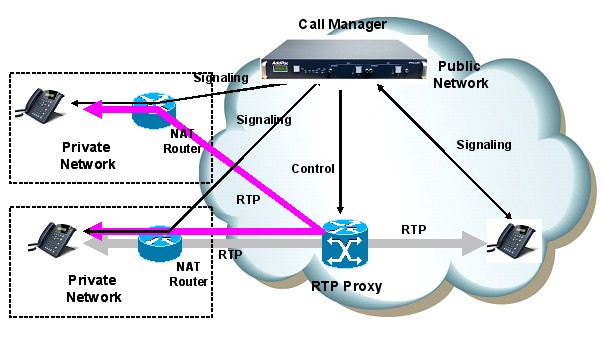This article will introduce you a network protocol – RTP protocol. The content will focus on the definition, main features, applications of RTP protocol. Besides, some additional information will also be provided for you.
What Is RTP
RTP protocol refers to Real-time Transport Protocol, which is a network protocol used for delivering audio and video via IP networks. As its name indicates, RTP is built for coping with real-time traffic (like audio and video) of the Internet.
This definition was defined in RFC 1889, which was developed by the Audio Video Transport Working group. It was firstly published in 1996.
Though RTP has the media streams, RTCP is utilized to supervise transmission statistics and quality of service and help synchronize multiple streams. The RTP is one of the technical foundations of VoIP and it is also used in conjunction with a signaling protocol (like SIP) that is helpful in building up the connections across the network.

-image from pinterest.com
Being a part of its specification, the RTP Payload type field contains the encoding scheme that the media gateway utilizes to digitize the voice content. This field recognizes the RTP payload format and decides its interpretation by the CODEC in the media gateway.
The configuration file specifies the default static mapping of payload type codes to payload formats. These mappings stand for the International Telecommunications Union (ITU) G series of encoding schemes.
The size and interval of RTP packets will vary according to the types of encoding schemes and packet creation rates. When planning voice services, administrators must take RTP parameters into consideration. All the combined parameters of the RTP sessions tell the amount of bandwidth consumed by the voice bearer traffic.
Recommended reading: ICMP (Internet Control Message Protocol): Definition, Application
Main Features of RTP
The RTP protocol is designed for the end-to-end streaming in real-time of media related data. RTP contains mechanisms for jitter compensation, packet loss detection, and out-of-order data packet delivery.
Since RTP enables data transfer to multiple destination end-points in parallel via IP multicast, it is the leading standard used for audio and video IP network transfers. The mechanisms for the related profile and payload format are implemented on the level of the application layer rather then the operating system layer.
Utilities like VoIP require real-time streaming of multimedia data especially the timely delivery of data. For instance, audio packet loss in a VoIP application can result in milliseconds of audio data loss. This sort of loss can be handled appropriately by error compensation algorithms so that the caller can ignore it.
Top recommendation: What Is Internet Protocol Suite and What It Mainly Contains
Application of RTP
RTP is mainly utilized in communication and entertainment systems like telephony and video teleconference applications. Though (Transmission Control Protocol) TCP is standardized for RTP use, it is not normally used in RTP applications as TCP prefers reliability to timeliness.
On the contrary, RTP usually runs over User Datagram Protocol (UDP). In addition, the RTP is often used in conjunction with the RTP Control Protocol (RTCP).
The majority of RTP implementations are built based on the User Datagram Protocol (UDP). Given to that fact, the real time transport protocol (RTP) is connectionless with best-effort delivery. Though it is connectionless, it still has a sequencing system that permits the detection of missing packets.
Some other transport protocols that are built for multimedia sessions like SCTP and DCCP are not used widely. In brief, RTP has the following applications.
- RTP is helpful in media mixing, sequencing and time-stamping.
- RTP works with Voice over Internet Protocol (VoIP).
- RTP can be used for video teleconferencing over Internet.
- RTP can be used for Internet audio and video streaming.
Bottom Line
What is RTP? Read here, you may have an overall understanding of it. To be specific, the definition, main features and applications of the real time transport protocol will be learned from the post.